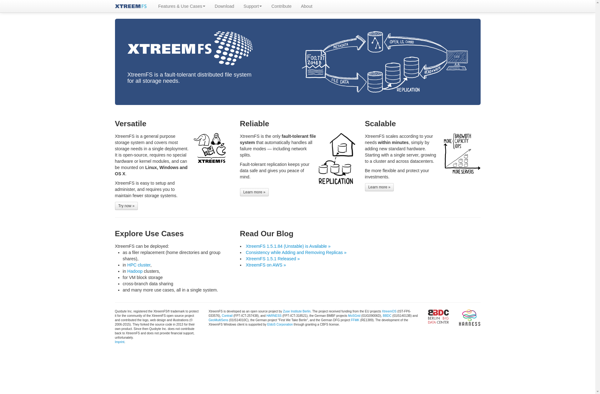XtreemFS

XtreemFS: Open-Source Distributed File System
XtreemFS is an open-source distributed file system designed for high availability, scalability and performance. It allows storing and accessing files across clusters of commodity servers.
What is XtreemFS?
XtreemFS is an open-source distributed file system designed specifically for high availability, scalability and performance to store and access files across clusters of commodity servers. It provides interfaces for POSIX and HTTP access, allowing existing applications to use XtreemFS without any changes.
Some key features of XtreemFS include:
- Scales to thousands of servers with billions of files
- Replication and erasure coding for data resiliency
- Policy-based data placement and dynamic load balancing
- Metadata caching for low-latency access
- Xrootd protocol support for high-speed data access
- Anchorless directories to avoid bottlenecks
- Integrated monitoring and administration tools
XtreemFS is implemented in C++ for high performance. It runs on Linux and can leverage local disks, as well as cloud object stores like Amazon S3 as storage backends. The modular architecture allows tuning for specific workloads such as HPC applications, media streaming, archiving and big data analytics.
XtreemFS Features
Features
- Distributed file system
- High availability
- Scalability
- High performance
- POSIX compatibility
- Replication
- Striping
- Caching
Pricing
- Open Source
Pros
Cons
Official Links
Reviews & Ratings
Login to ReviewThe Best XtreemFS Alternatives
Top File Sharing and Distributed File Systems and other similar apps like XtreemFS
Here are some alternatives to XtreemFS:
Suggest an alternative ❐Linux File Systems for Windows

Ceph

GlusterFS

Ext2Fsd

DiskInternals Linux Reader

WekaFS

Ext2 Installable File System

BeeGFS

Ext2Read (Ext2Explore)

HFSExplorer

DRBD

Lustre

StorPool

Seaweed FS

MooseFS

LizardFS

Quobyte

FSproxy

Explore2fs

Skylable Sx

Ext2/3/4 Filesystem Utilities
